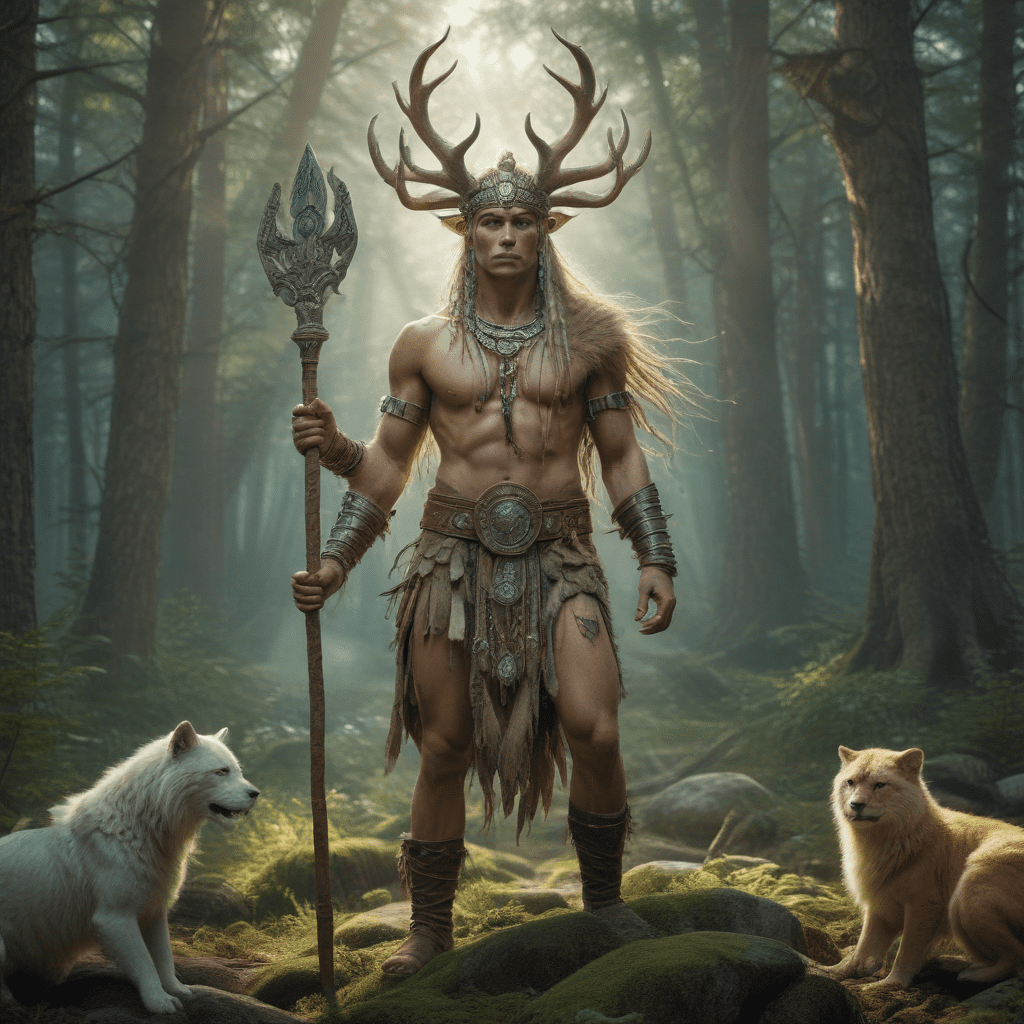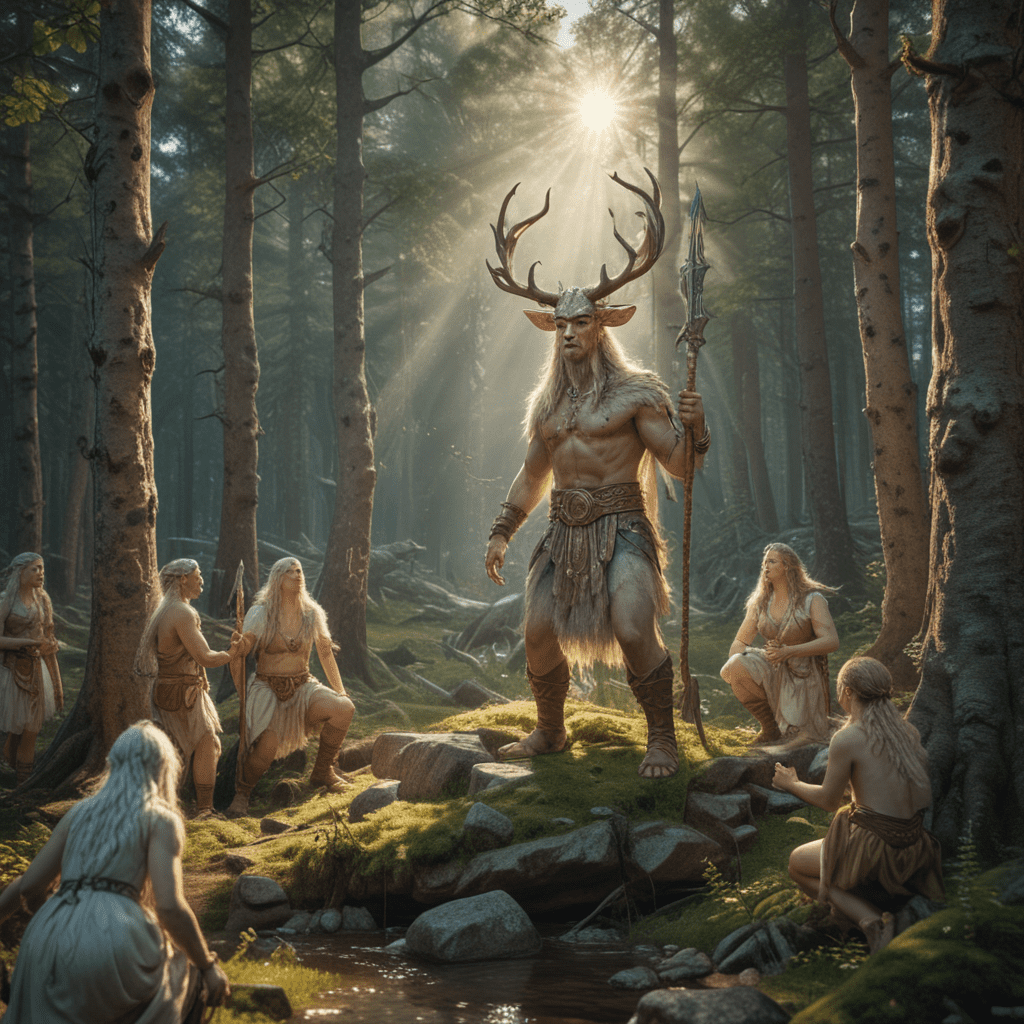Introduction to Finnish Mythology
Finnish mythology, a rich tapestry of folklore, beliefs, and traditions, has captivated imaginations for centuries. Woven into the fabric of Finnish culture, this mythology is an intricate blend of ancient animistic beliefs, shamanistic practices, and later influences from Norse and Christian traditions.
Historical and Cultural Context of Finnish Shamanism
Shamanism, a spiritual practice involving the mediation between the physical and spirit worlds, has played a pivotal role in Finnish culture for thousands of years. In ancient times, shamans held a respected position as healers, advisors, and intermediaries between the human and supernatural realms. Shamanistic practices were deeply ingrained in daily life, influencing everything from hunting and fishing to sickness and death.
The Role of the Shaman in Finnish Culture
Shamanism in Finland revolved around the figure of the shaman, known as a "noita" or "tietäjä." These individuals possessed the ability to communicate with and manipulate spirits, both benevolent and malevolent. They were consulted for guidance, healing, and protection, and their knowledge and power were highly valued by their communities.
Shamanistic Beliefs and Practices
Finnish shamanistic beliefs centered around the concept of a multi-layered universe, inhabited by a vast array of spirits, gods, and mythical creatures. Shamans believed they could access these other realms through trance states induced by drumming, chanting, and the use of psychoactive substances.
The Spirit World in Finnish Mythology
The Finnish spirit world was a complex and multifaceted realm, populated by a myriad of beings. These included nature spirits associated with forests, lakes, and mountains; ancestral spirits who watched over their descendants; and deities such as Ukko, the god of thunder, and Väinämöinen, the hero-magician.
6. Rituals and Ceremonies in Shamanism
Shamans performed various rituals and ceremonies to interact with the spirit world. These ceremonies often involved drumming, chanting, and the use of sacred objects such as drums and rattles. Shamans also entered trance states to facilitate their journeys to other realms and communicate with spirits.
7. The Use of Psychedelics in Shamanic Practices
Psychedelic substances, such as fly agaric mushrooms, played a significant role in Finnish shamanism. Shamans believed these substances could enhance their spiritual experiences and allow them to access hidden knowledge and power. The use of psychedelics was an integral part of shamanic healing and divination rituals.
8. The Decline and Revival of Finnish Shamanism
With the arrival of Christianity in Finland, shamanism gradually declined as a dominant religious force. However, shamanistic beliefs and practices continued to exist in various forms, often blending with Christian traditions. In recent decades, there has been a revival of interest in shamanism in Finland, driven by a desire to reconnect with ancient spiritual traditions.
9. Contemporary Shamanism in Finland
Today, shamanism in Finland is a diverse and vibrant practice. Contemporary Finnish shamans draw upon traditional beliefs and techniques while incorporating modern knowledge and insights. Shamanic practices continue to be used for healing, personal growth, and spiritual guidance, offering a bridge between the ancient and the present.
10. Conclusion: The Significance of Finnish Mythology and Shamanism
Finnish mythology and shamanism provide a unique window into the cultural and spiritual heritage of the Finnish people. These beliefs and practices have shaped the Finnish worldview and continue to inspire creativity, spirituality, and a connection to the natural world. The study of Finnish mythology and shamanism offers valuable insights into the human search for meaning, purpose, and connection to the divine.
Frequently Asked Questions (FAQs)
1. What is the difference between Finnish mythology and shamanism?
Finnish mythology encompasses the stories, beliefs, and deities that have shaped the Finnish culture, while shamanism refers to the spiritual practices and rituals used by shamans to communicate with the spirit world.
2. Are there any shamans in Finland today?
Yes, contemporary shamanism is alive and well in Finland. Many Finnish shamans offer healing, guidance, and spiritual workshops based on traditional beliefs and modern insights.
3. Is Finnish shamanism dangerous?
When practiced by experienced and responsible shamans, Finnish shamanism is generally not dangerous. However, it's important to approach any spiritual practice with respect and caution, and to consult with qualified professionals when seeking guidance.



